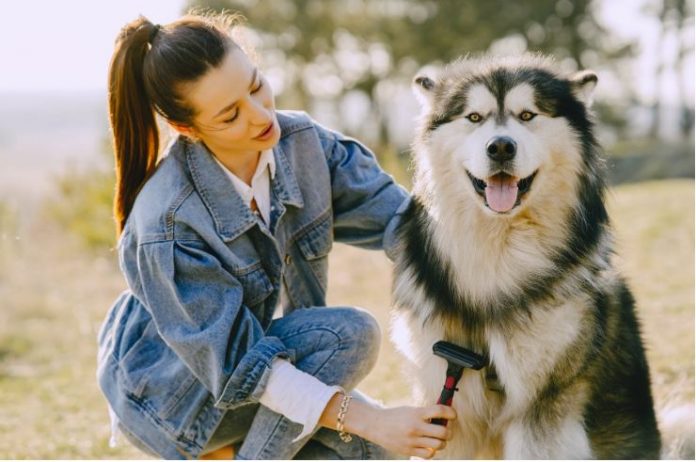It is vital that the dog is groomed regularly for several reasons:
1. To avoid discomfort.
2. To help eliminate skin disorders.
3. To prevent infestation of parasites.
4. To stop smells developing.
5. To avoid extra charges at the Vets.
6. To remove loose hair, reducing amount floating around the house.
To achieve a tip-top coat condition and maintain a healthy pet, it is essential that the ears, eyes, coat, skin and anal area of the dog is checked regularly.
The first steps to grooming the dog:
1. Ensure you have a steady and non-slip worktop or table. A rubber bath mat placed on a firm table will do. Do not use a towel as this will slip and slide.
2. Make sure that the dog knows that this is the place where not to misbehave. Start if possible as a puppy with regular short sessions.
3. Make this an enjoyable and pleasurable experience (for both of you) but not a game.
4. The dog must learn through repetition, correction and praise. Do not smack the dog, use voice control.
5. Always reward the dog after a groom, either by treat or physical attention.
6. Take the dog outside to relieve itself before the groom begins and once the groom is completed.
The recommended frequency of grooming varies according to coat texture and length. Seek the advice of an experienced breeder or groomer.
As a guide, every dog should be groomed at least once a week, many breeds three times!
Do’s and Don’ts when brushing ALL types of coats:
1. Do not bath the dog before thoroughly brushing out, as this tightens any knots present, also shampoo will be difficult to rinse out.
2. Do start brushing from the back and work towards the front as this is less sensitive for the skin.
3. Do be systematic, so that you do not miss any areas.
4. Do always hold limbs at a natural angle, no matter how awkward the position a knot may be in.
5. Do remember that with most breeds there is the undercoat to brush too, not just the surface of the coat.
6. Do be firm, but do not smack. Praise once corrected and obeyed.
Techniques of Brushing:
With ling haired, dense and curly non-shedding hair, be aware that by brushing just on the surface of the coat does not prevent matting. There is hair all the way down to the skin that needs attention.
Begin at the bottom of the back leg, using your non-brushing hand, lift the hair up and slicker brush underneath, bit by bit gradually brushing hair down form where you are holding it.
Remember that there are four sides to a leg, front, back, outside and inside. Having worked your way up the leg, start on the belly and use the same method on the body.
Always check with a comb, after thoroughly brushing, to check for hidden knots.
Take care when brushing near the eyes, the pins of the brush can scratch the eyes and cause permanent damage, sometimes loss of sight.
The hock and the belly are also sensitive areas when brushing. Special attention should be given to the Matt Zones- underarms, inside legs, behind ears and feathering on thick coated dogs.
Basic Tools for Grooming:
Smooth haired dogs will require a rubber brush to brush against the lie of the coat to loosen hairs.
A bristle brush to remove dead skin and surface dirt and also stimulates circulation. A chamois cloth to polish the coat for added sheen.
Short coated dogs will require a slicker brush and a bristle brush. As will long silky coats, which will additionally require a comb to test for remaining knots.
Curly, non-shedding coats will require a pin brush and comb.

